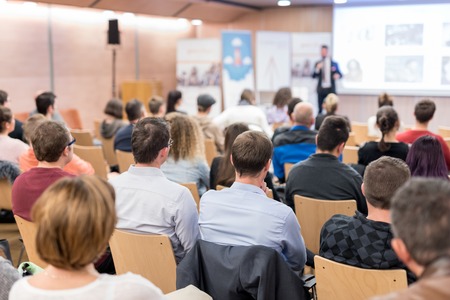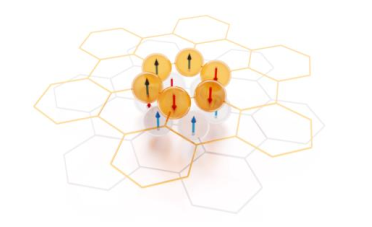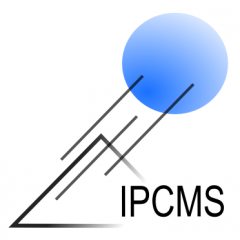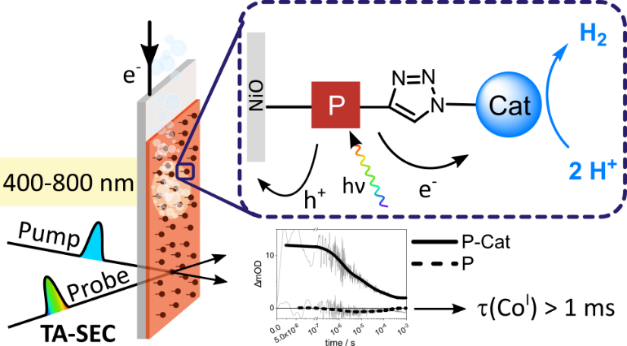
9h30 -10h15: Prof. Stefan Lochbrunner
Institute of Physics and Department of Life, Light and Matter, University of Rostock, Germany
Exciton Dynamics and Migration in Organic Nanostructures
10h30 – 11h15: Prof. Andrea Cannizzo
Laboratory of Ultrafast Molecular Spectroscopy, Institute of Applied Physics, University of Bern, Switzerland.
Ultrafast transport of excitons and energy in antenna systems as multi-chromophoric systems and carbonaceous nanodots
Contact: Jérémie Léonard, IPCMS, Jeremie.Leonard@ipcms.unistra.fr

Orateur : Benjamin Besga, ILM Lyon
Résumé : The aim of stochastic thermodynamics is to study small non-equilibrium systems subject to thermal fluctuations. Some results from this field will be illustrated using experiments carried out on opto-mechanical systems, mainly colloidal particles in an optical trap. Using non-equilibrium statistical physics will see how we can accelerate the natural dynamics of a system, shorten the mean first passage time on a target, or measure the forces acting on a non-equilibrium probe. Finally, we’ll ask how we can interrogate the quantum limit of these results by looking at the opto-mechanical coupling of a self assembled supercrystal of quantum dots in an optical trap.

Dr. Veiko Karu (responsable de projet principal pour les projets de recherche et développement de l’EIT à l’Université de Technologie de Tallinn (TalTech)

Hiroyuki NAKAMURA (Department of Materials Science and Engineering, Kyoto University, Kyoty 606-8501, Japan)
Résumé : voir doc joint ci-dessous
https://www.ipcms.fr/uploads/2023/05/SEMINAIRE-H.-NAKAMURA-13.06.23.pdf
Pour tout contact : Christian MENY : christian.meny@ipcms.unistra.fr

Orateur : Dr. Murielle Chavarot-Kerlidou (Univ. Grenoble Alpes, CNRS, CEA, IRIG, Laboratoire de Chimie et Biologie des Métaux (UMR 5249), F-38000, Grenoble, France.)
Résumé :
Making fuels and chemicals from sunlight and abundant raw materials such as water and CO2 represents a major challenge to meet for a clean energy future. To achieve sunlight-driven water splitting, the integration of molecular H2-evolving catalysts into photoelectrochemical cells is a promising, yet challenging strategy. Our contribution to the field will be highlighted through different examples covering all aspects from catalyst design to the construction of functional water-splitting devices. Photoelectrochemical activity of dye-sensitized NiO photocathodes based on covalent dye – cobalt catalyst assemblies will be discussed in detail, together with some key insights into the factors currently affecting their performances, obtained from advanced spectroscopy and post-operando characterizations

Orateur : Franklin Luis dos Santos Rodrigues, University of Stuttgart
Résumé :
Quantum thermodynamics allows for the interconversion of quantum coherence and mechanical work. Quantum coherence is thus a potential physical resource for quantum machines. However, formulating a general nonequilibrium thermodynamics of quantum coherence has turned out to be challenging. In particular, precise conditions under which coherence is beneficial to or, on the contrary, detrimental for work extraction from a system have remained elusive. We here develop an approach that allows us to study the far-from-equilibrium thermodynamics of coherence. We concretely derive generalized fluctuation relations and a maximum-work theorem that fully account for quantum coherence at all times, for both closed and open dynamics. We obtain criteria for successful coherence-to-work conversion, and identify a nonequilibrium regime where maximum work extraction is increased by quantum coherence for fast processes beyond linear response
Contact :
Contact : Martin Bowen (martin.bowen@ipcms.unistra.fr)

Fernanda de Avila Abreu (Microbiology Institute, Federal University of Rio de Janeiro (UFRJ)
Résumé :
Magnetotactic microorganisms are capable of synthesizing membrane-enclosed intracytoplasmic magnetic nanocrystals. The ability to produce these structures is shared among living beings that use the geomagnetic field as a form of guidance in migratory processes. Due to their structural simplicity concerning macroorganisms, magnetotactic bacteria have been widely studied regarding the synthesis of magnetic nanocrystals and magnetic orientation. The nanocrystals produced by magnetotactic bacteria have a narrow size range, consistent shape, chemical purity, crystallographic perfection, and stable properties. Furthermore, the synthesis process is considered entirely sustainable. Therefore, scaling up the production of these magnetic nanoparticles of biological origin, as well as innovative biotechnological approaches, are being studied towards a sustainable future.
Contact : Ovidiu ERSEN, ovidiu.ersen@ipcms.unistra.fr

10:15 – 10:45: Paloma Arroyo Huidobro
Departamento de Física Téorica de la Materia Condensada, Uni. Autónoma de Madrid
Controlling light-matter interactions with subwavelength emitter arrays
10:45 – 11:00: coffee break
11:00 – 11:30: Denis Basko
Université Grenoble Alpes, CNRS, LPMMC, Grenoble
Local bistability under microwave heating for spatially mapping
disordered superconductors
11:30 – 12:00: Jean-Noël Fuchs
Sorbonne Université, CNRS, LPTMC, Paris
The SSH model and the Zak phase



